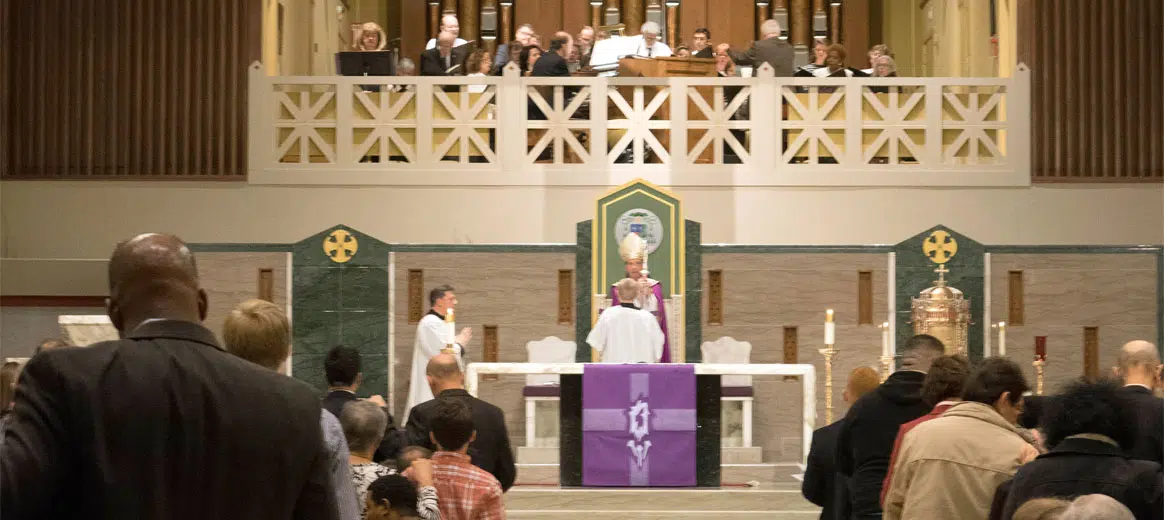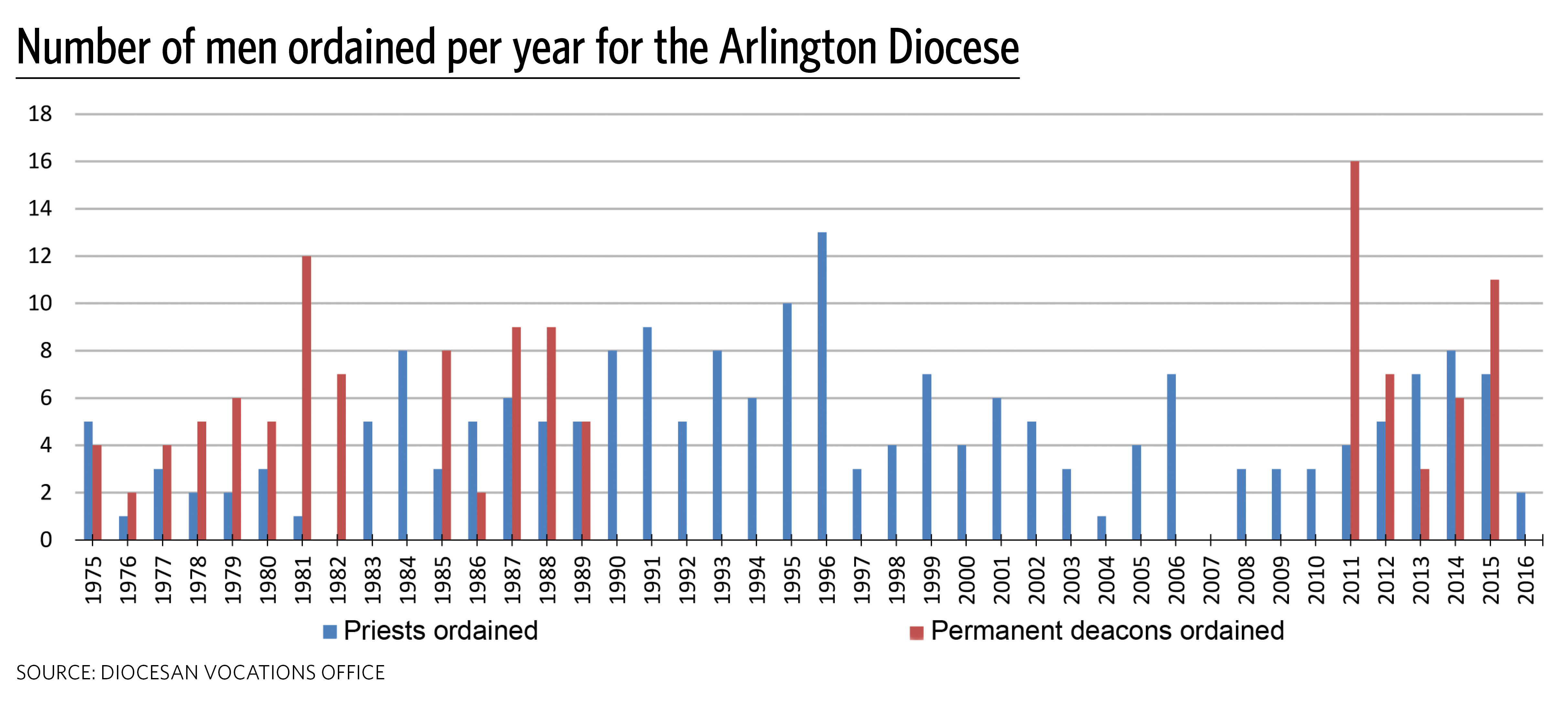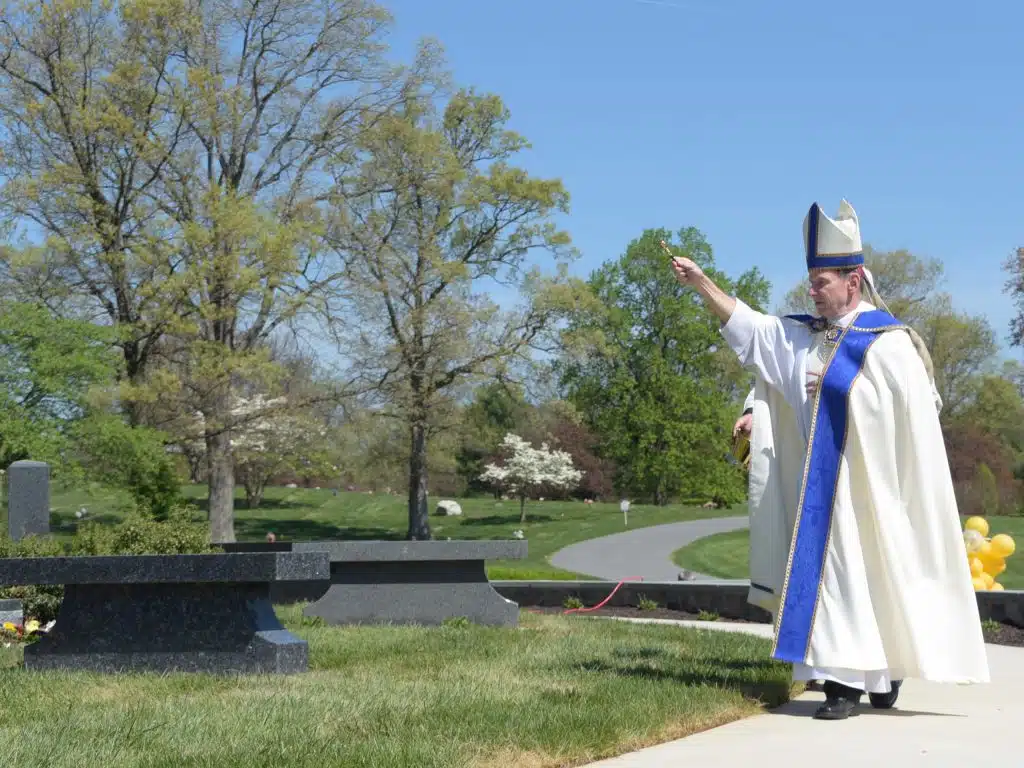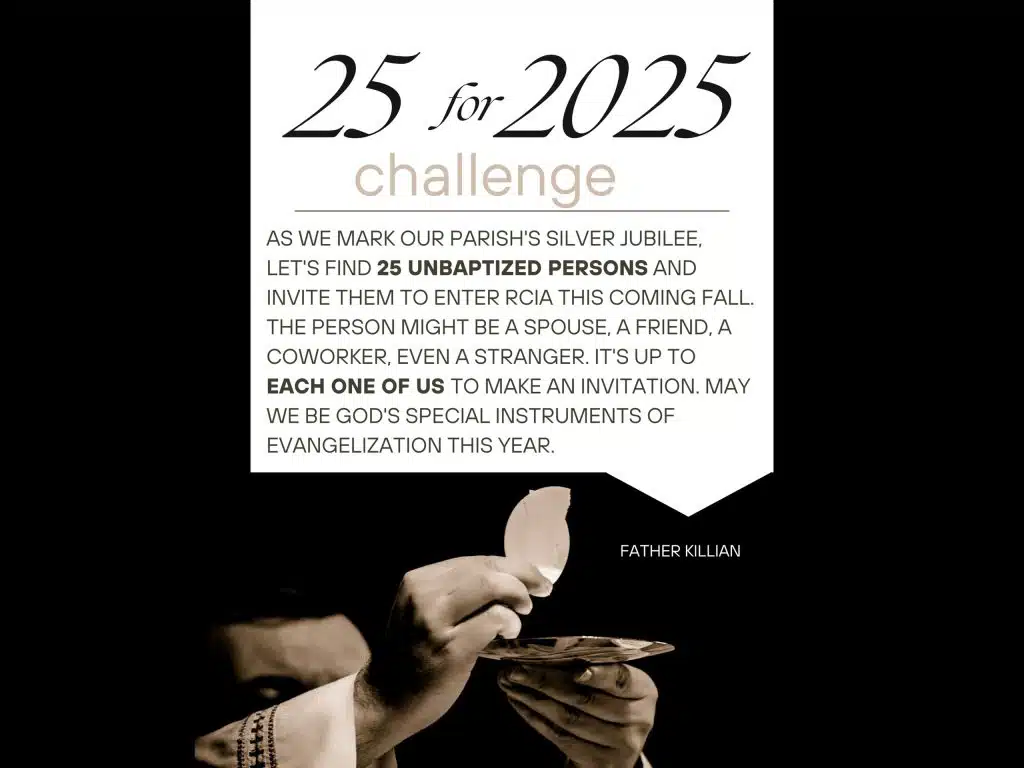Hairstyles change, fashions fluctuate and political parties go in
and out of power. The Catholic Church in the United States has changed, too. A
new book, Catholic Parishes in the 21st
Century, from the Center for Applied Research in the Apostolate at
Georgetown University in Washington, has tracked these trends. Many of the
changes, such as greater ethnic diversity and a growing Catholic presence in
the south and in the suburbs, are clearly visible within the Arlington Diocese.
Catholics on the move
In the first half of the 20th century, Catholics and their
parishes were clustered primarily in cities in the Northeast and Midwest.
Today, many Catholics have moved to the suburbs and are distributed evenly throughout
the four regions of the United States. As Southern dioceses build new churches
to accommodate the growing Catholic population, others make the difficult
decision to close or merge parishes that are no longer sustainable.
The number of U.S. parishes peaked in the 1980s at around 19,000
parishes. The current total is around 17,000 parishes. While older churches
were built with smaller capacities, the physical size of church buildings has expanded
in recent years. Most church buildings are more than 50 years old. In 2010,
nearly a third was more than 80 years old.
As a primarily suburban diocese south of the Mason Dixon line, Arlington
has benefited from these trends. In the last 20 years, the diocese has opened
nine parishes, seven of which are located outside the populous Fairfax County.
Since the diocese was founded in 1974, there has been only one parish merger.
In 2002, St. John Church in Orange merged with St. Mark Church in Gordonsville
to become St. Isidore the Farmer Church in Orange.
Losing priests, gaining deacons and lay leaders
Many dioceses, particularly in the Northeast and Midwest, may
choose to close or merge parishes due to a declining number of priests or
parishioners. Catholic Parishes
states that 450-550 new priests are ordained for ministry in the U.S. each
year. “However, the sobering reality is that this is only about a third of the
number needed to compensate for the large numbers of elderly priests who are
dying, retiring or otherwise leaving pastoral ministry,” it said.
These statistics are troubling and the consequences of the priest
shortage will force the church to adjust in coming years. But as the book
points out, “no other world region except for Europe has as favorable a ratio
of Catholics per priest as the United States” — 1,700 Catholics per priest.
The one growing group of clergy is permanent deacons. According
to The Official Catholic Directory, there
are more than 18,000 permanent deacons in the U.S. If the trend continues, the
number of deacons will soon surpass the number of diocesan priests. Already one
in four parishes nationwide has a deacon.
Though the diaconate formation program for the Arlington Diocese
was suspended for years, nearly 50 men have been ordained to the permanent
diaconate since 2011. Today, 76 permanent deacons are assigned to parishes.
The 1990s saw the most priests ordained in the diocese — an
average of seven men per year. An average of five men per year was ordained in
the last seven years.
The slow decline of seminary recruits that began in the 1960s
coupled with Vatican II’s directive for the laity to take a greater
responsibility in leading the church has led to more lay people working in
churches. In the early 2000s, the number of lay ecclesiastical ministers
surpassed the total number of diocesan priests, reports Catholic Parishes. In dioceses where parishes outnumber priests,
lay people, religious sisters or deacons, known as parish life coordinators,
may be called on to run the parish instead.
Catholic Parishes notes
that lay ministers provide a vital role to the parish by specializing in areas such
as finance, building maintenance or music, which the pastor may not enjoy or be
trained in. Yet, because they often have advanced degrees and families to support,
lay ministers also require adequate pay. Robust parishioner tithing is critical
for parish staff salaries, upkeep for aging church structures as well as
typical church activities.
Catholic Parishes reports
there is room for tithing improvement. “Nearly every study of Catholic giving
conducted in the late 20th and 21st century has found that Catholics contribute
about half as much to their parish, as a percentage of household income, as
Protestants contribute,” according to the book. The typical Catholic household contributes 1.1
to 1.2 percent of their income, though parishioners in smaller parishes, perhaps
more aware of the necessity of their personal contribution, give more.
Bob Mueller, diocesan director of development, believes around 45
to 50 percent of Arlington Diocese parishioners donate regularly to their
parish. Due to the affluence of the area and parishioners’ generosity, the
diocese fares well financially compared to others. When parish leadership explains
the importance of stewardship as part of the Christian life to parishioners,
giving grows.
Diversification
For decades, the Catholic Church in the United States was fueled
by immigration. In the early 20th century, it was mostly through immigrants
from European countries such as Ireland, Italy and Poland. They formed
“national” parishes, with no physical boundaries, so immigrants could celebrate
their own traditions and speak in their own language.
The Arlington Diocese has only two “national” parishes: Holy
Martyrs of Vietnam Church in Arlington and St. Paul Chung Church in Fairfax for
Korean speakers. Today, dioceses favor the “shared” parish model, where recent
immigrants form communities within existing parishes.
A good example is the Our Lady of La Vang community within St.
Veronica Church in Chantilly, said Corinne Monogue, diocesan director of
Multicultural Ministries. Though they share the same facilities, the Vietnamese
and English-speaking communities have their own Masses, Knights of Columbus
council, Legion of Mary and religious education classes.
According to Catholic
Parishes, “from 2005 to 2010, the average proportion of Caucasians in
parishes decreased by nearly 3 percent, while the number of Asian and Hispanic
parishioners increased by 17 percent. As many as one in four U.S. Catholic
parishes celebrate their weekend liturgies in more than one language.”
The Arlington Diocese offers 43 Spanish Sunday liturgies, five in
Korean and nine in Vietnamese. One Sunday liturgy each week is available for
the Eritrean, Ghanaian and Syro-Malabar Indian communities. Masses in other
languages, such as Tamil, Portuguese and Tagalog, are offered less frequently.
Mass attendance nationally has dropped over the past decades. In
1965, around 55 percent of Catholics said they had gone to church in the last
week, then 41 percent in 1985 and finally 24 percent in 2010. Yet, according to
Catholic Parishes, “these data
suggest that those attending Mass weekly today are more likely than those 50
years ago to be in the pews because they want to be there and not out of some
sense of moral obligation, social pressure or guilty conscience.”
Overall, Catholic Parishes
found that “the neighborhood parish is being transformed into the regional
community parish, a site that relies on the collaboration and co-responsibility
of available clergy, vowed religious and lay people.” The church in the United
States will continue to adapt as American demographics and culture evolve.





